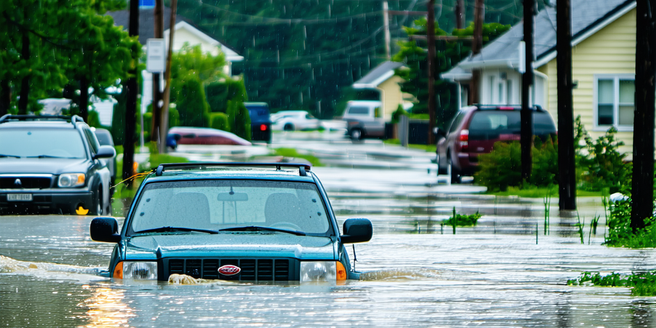
Understanding Different Weather Events and Their Risks
Understanding various weather events is crucial for ensuring child safety. Severe weather such as hurricanes, tornadoes, and thunderstorms each carry unique risks. Hurricanes can lead to prolonged periods of power outages and flooding, while tornadoes can cause sudden and severe structural damage. In contrast, thunderstorms, although less destructive, can still pose threats like lightning and hail. It’s vital to discuss these risks with children in a calm and factual manner, helping them to recognize the seriousness of these events without inducing unnecessary fear. Inform them about the natural signs of these weather patterns and how to differentiate between them, emphasizing the importance of seeking shelter and following adult instructions when a warning is issued.
Preparing Your Home and Family for Severe Weather
Preparation is key to ensuring safety and minimizing risk during severe weather. Start by reviewing and updating your family emergency plan, making sure everyone knows their roles. Secure outdoor furniture and items that could become projectiles in strong winds. Reinforce windows and doorways with storm shutters or plywood. Conduct family drills so everyone knows what to do when a warning is issued. It’s also important to check that your emergency kit is easily accessible and stocked with essentials like water, non-perishable food, and a first aid kit. Ensure electronic devices are charged, vehicles are fueled, and emergency contacts are updated. By discussing preparations with children, you not only enhance their safety but also their confidence in dealing with emergency situations.
Emergency Kits: Essentials for Child Safety
An emergency kit is a cornerstone of child safety during any weather event. This kit should include basic items like bottled water and non-perishable snacks to sustain your child for at least 72 hours. Consider the specific needs of each child, such as medications, medical records, and comfort items like a favorite toy or blanket, which can provide reassurance during stressful times. Keep a fully charged battery-operated radio or a NOAA Weather Radio for updates, along with extra batteries. Include a flashlight, whistle, and a child-friendly first aid manual. It’s also wise to provide identification and contact information. Teach children where the kit is located and how to use certain items safely. Periodically review and refresh the kit to ensure all items remain in good condition.
Evacuation Plans: Ensuring Your Child’s Safety
Creating a comprehensive evacuation plan is essential for child safety. Discuss potential evacuation routes and designate a meeting point outside the immediate danger zone. Ensure children understand the plan, emphasizing the importance of staying calm and listening to instructions. Practice evacuations regularly so they become familiar with the procedure. Consider special needs for young children or those with health issues, and make arrangements for pet safety. Coordinate with neighbors or community members if needed to assist in the evacuation process. Keep a list of emergency contacts and a small bag with essentials ready at all times. Encourage children to ask questions, so they feel informed and secure in the knowledge that their safety is your top priority.
Educating Children: How to Stay Safe in a Storm
Educating children on how to remain safe during storms is vital for their protection and reduces anxiety. Teach them the importance of seeking shelter in a secure location, such as a basement or interior room, away from windows. Explain the significance of listening to emergency broadcasts and following adult guidance. Discuss different alerts like watches and warnings, and what each signals in terms of danger levels. Make learning interactive by creating fun drills that simulate seeking shelter and practicing emergency procedures. Encourage them to ask questions and express their fears, addressing them with clear and reassuring explanations. Empowering children with knowledge helps them feel more in control and enhances their ability to respond appropriately in real situations.
Post-Weather Event Strategies for Reassurance
After a weather event, it’s crucial to focus on reassurance strategies for children. Begin by assessing the immediate environment for safety before involving them. Communicate openly about what happened, allowing them to express their experiences and anxieties. Highlight positive outcomes, like simply being safe together, to reinforce a sense of security. Restore routines as soon as possible to provide normalcy. Monitor their emotional responses, being mindful of signs of trauma or anxiety, and consider professional support if needed. Involve children in recovery activities, like tidying up or comforting neighbors, to foster resilience and community spirit. Reiterate safety plans and discuss any updates, emphasizing readiness and collective safety for the future. This approach not only aids recovery but also strengthens their coping mechanisms for future challenges.
